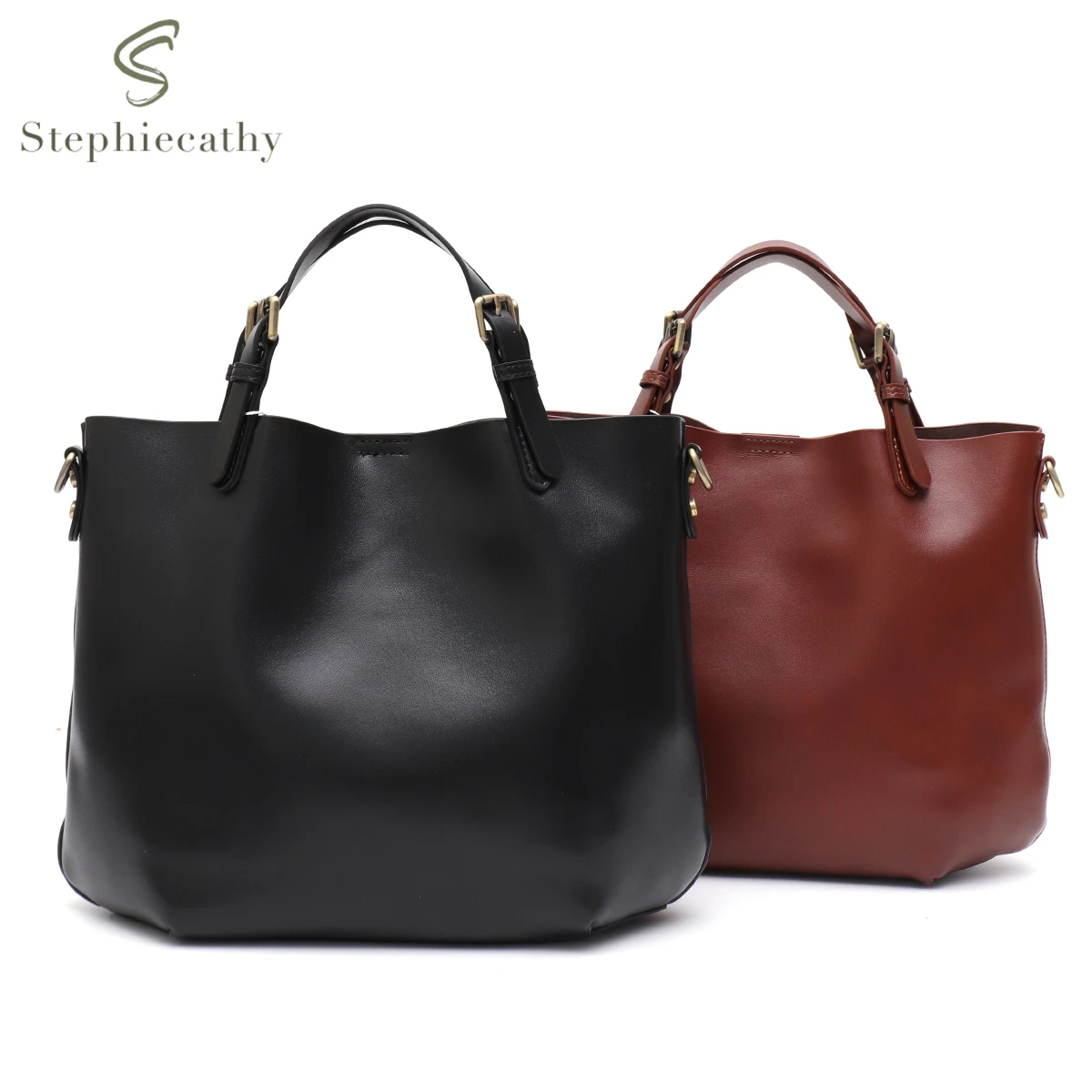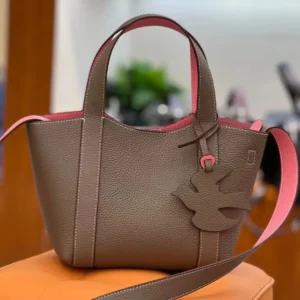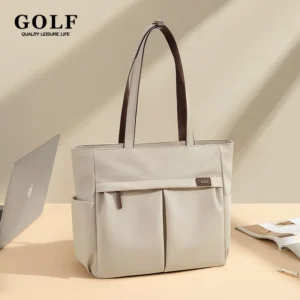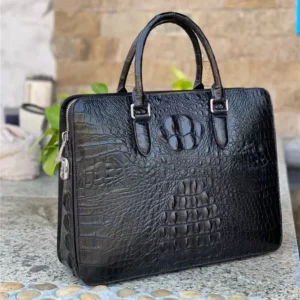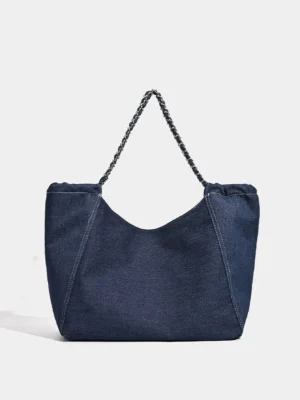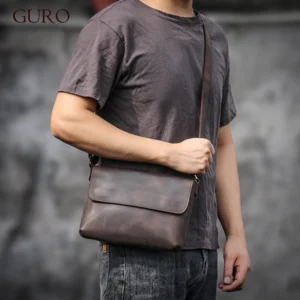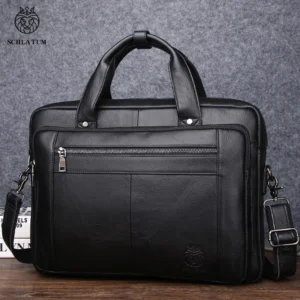The Vital Role of Conditioning in Leather Bag Maintenance
Leather conditioning is more than just a maintenance step—it’s an essential practice that keeps your daily-use bags looking beautiful and functioning properly for years to come. Unlike synthetic materials, leather is a natural skin that retains many of its original properties even after tanning. This means it continues to need moisture and nourishment to stay supple and resist damage.
When you use a leather bag daily, it faces constant stress from handling, exposure to different environments, and contact with various surfaces. Without proper conditioning, the natural oils in leather gradually deplete, leading to a cascade of problems:
- Prevents cracking and splitting – Dry leather becomes brittle and develops micro-fissures that eventually turn into visible cracks
- Maintains natural flexibility – Conditioned leather retains its soft, pliable texture that makes bags comfortable to carry
- Enhances water resistance – Properly conditioned leather naturally repels light moisture
- Preserves color vibrancy – Regular conditioning prevents premature fading and color loss
- Extends overall lifespan – Bags that receive regular conditioning often last decades longer than neglected ones
The difference between conditioned and unconditioned leather becomes strikingly apparent within just a few months of daily use. Unconditioned leather loses its luster, becomes stiff, and develops a dry, parched appearance. Meanwhile, regularly conditioned leather maintains its rich color, develops a beautiful patina, and continues to feel smooth and luxurious to the touch.
Understanding how timeless classic leather briefcases are constructed helps you appreciate why conditioning matters—quality leather responds remarkably well to proper care, rewarding you with beauty and durability that improve with age.
Recognizing When Your Leather Bag Needs Conditioning
Knowing exactly when to condition your leather bag helps prevent both under-maintenance (which leads to damage) and over-conditioning (which can cause other issues). Look for these telltale signs that your bag is thirsty for conditioning:
Visual Indicators
- Color appears lighter or more faded than usual
- Surface looks dry, dull, or lacks natural luster
- Visible micro-cracks forming, especially in high-flex areas
- Leather appears “tight” or less supple than when new
- Visible scuff marks that don’t buff out with gentle rubbing
Tactile Indicators
- Leather feels stiff or rigid when handled
- Surface feels rough or paper-like instead of smooth
- Loss of natural “give” or flexibility when pressed
- Edges feel hard or brittle rather than soft
- Handles feel dry or rough against your hands
A simple “water drop test” can confirm your bag’s condition: place a small drop of water on an inconspicuous area of your bag. If the water beads up nicely, your leather still has good moisture content. If it quickly absorbs, spreading into the leather, conditioning is overdue.
Seasonal changes also affect conditioning needs. Winter’s dry indoor heating and summer’s intense sunlight both accelerate moisture loss in leather. You might find your bag requires more frequent conditioning during extreme weather conditions or when transitioning between seasons.
The knowledge gained from understanding best leather briefcase characteristics applies equally to recognizing quality in both the leather itself and how it responds to conditioning treatments.
Understanding Different Leather Types in Daily Bags
Not all leather responds the same way to conditioning treatments. Different tanning methods, finishes, and leather cuts create distinct characteristics that affect how you should approach conditioning:
| Leather Type | Characteristics | Conditioning Needs |
|---|---|---|
| Full-grain | Natural surface with visible pores and marks | Moderate absorption, responds well to most conditioners |
| Top-grain | Lightly sanded surface, more uniform appearance | Moderate absorption, benefits from lighter application |
| Corrected-grain | Heavily processed, embossed pattern | Less absorption, requires specialized products |
| Saffiano | Cross-hatch pattern pressed into leather | Minimal absorption, light conditioning only |
| Patent leather | Glossy coating over leather | Very minimal absorption, specialty products only |
| Suede/Nubuck | Raised nap surface | Requires specialized conditioning sprays, not creams |
Full-grain leather, considered the highest quality option, typically requires more consistent conditioning as it retains more of its natural properties. The visible pores absorb conditioner readily, and the leather dramatically improves with regular care. Understanding the distinctions between full-grain versus top-grain leather quality helps you make better decisions about conditioning products and techniques.
Treated leathers like Saffiano (often used in designer bags) have protective finishes that reduce the need for frequent conditioning but require specific products that won’t damage their surface treatments. These leathers need conditioning less frequently but still benefit from occasional treatment.
For those considering different bag options, our full-grain messenger bag collection showcases leather that responds exceptionally well to proper conditioning routines, developing a rich patina over time.
Essential Pre-Conditioning Preparation Steps
Before applying any conditioner to your leather bag, proper preparation is crucial to ensure optimal results and prevent potential damage:
Empty your bag completely: Remove all contents, including items from interior pockets and compartments. Shake the bag gently upside down to dislodge any debris hiding in corners.
Inspect thoroughly: Check for damage, stains, or issues that might need special attention before conditioning. Pay particular attention to stress points like handles, corners, and bottom edges.
Clean the surface: Use a soft, dry cloth to wipe away surface dust and debris. For more thorough cleaning, use a leather-specific cleaner or mild soap solution:
– Apply cleaner to a cloth (never directly to leather)
– Work in small sections with gentle circular motions
– Avoid excessive moisture that could saturate the leather
– Pay special attention to handles and other high-contact areasAllow proper drying time: After cleaning, allow your bag to air dry completely away from direct heat sources. This typically takes 1-3 hours depending on ambient humidity.
Address hardware components: Use a dry cloth to clean metal hardware, avoiding getting polish or cleaners on adjacent leather areas.
Understanding the differences between genuine and synthetic leather care can prevent damaging mistakes, as conditioning products meant for real leather can deteriorate synthetic alternatives.
For specialty leathers like those found in our Crazy Horse leather satchel collection, specific cleaning preparations may be necessary, as these leathers develop unique patinas that benefit from particular care methods.
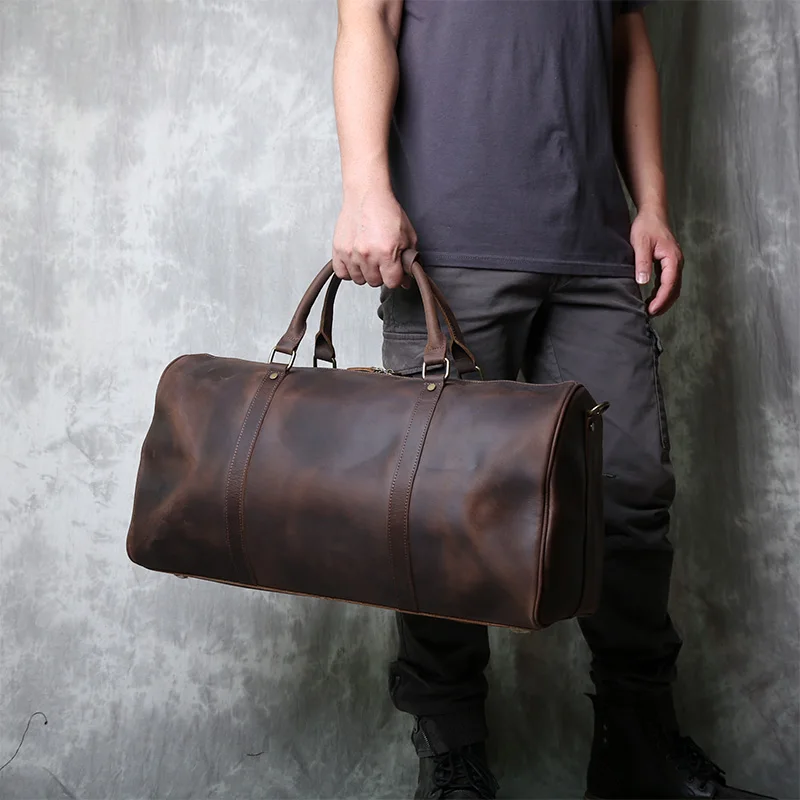
Step-by-Step Leather Conditioning Application Guide
Once your bag is properly cleaned and dried, follow these steps for perfect leather conditioning results:
Gather your supplies:
– Your chosen leather conditioner
– 2-3 clean, lint-free soft cloths (microfiber works well)
– Small sponge applicator (optional, for detailed areas)
– Clean workspace with good lightingTest in an inconspicuous area: Apply a small amount of conditioner to an hidden spot (like the bottom corner or inside flap) and wait 24 hours to check for any adverse reactions like darkening or discoloration.
Apply the conditioner:
– Place a small amount of conditioner (about the size of a quarter) onto your cloth
– Work in small sections, using gentle circular motions
– Use light, even pressure—don’t rub aggressively
– Pay special attention to high-stress areas like handles, corners, and edgesHandle detailed areas carefully:
– For seams and stitched areas, use your fingertip wrapped in the cloth
– For tight corners or hardware-adjacent areas, use a small sponge applicator
– Around metal hardware, apply carefully to avoid buildupAllow absorption time: Let the conditioner absorb for 10-15 minutes. The leather should feel slightly tacky but not wet or slick.
Buff with a clean cloth: Using your second clean cloth, gently buff the entire surface in circular motions until the leather feels smooth with no residue.
Allow full curing time: Let your bag rest for 24 hours before using it again. This allows the conditioner to fully penetrate and restore the leather’s natural moisture balance.
The entire process typically takes about 30-45 minutes for application, plus drying time. For heavily used bags, focusing on high-wear areas like handles may require more frequent spot-conditioning.
For more information on maintaining long-lasting bags, our guide on durable leather briefcase options provides additional context on how proper conditioning contributes to years of use.
Selecting the Ideal Leather Conditioner for Your Bag
Choosing the right leather conditioner can be overwhelming with so many options available. Understanding the main types helps you make an informed decision:
| Conditioner Type | Best For | Pros | Cons |
|---|---|---|---|
| Cream-based | Most everyday leather bags | Balanced moisture, easy application | Moderate drying time |
| Oil-based | Dry, matte-finish leathers | Deep conditioning, rich results | Can darken leather, longer absorption |
| Wax-based | Bags exposed to elements | Maximum protection, water resistance | Heavier feel, may alter finish |
| Spray conditioners | Treated/finished leathers | Quick application, light conditioning | Less deep penetration |
When examining conditioner ingredients, look for these beneficial components:
– Natural oils (neatsfoot, mink oil) for deep nourishment
– Lanolin for moisture retention
– Beeswax for protective properties
– Vitamin E for leather cell preservation
Conversely, avoid conditioners containing:
– Alcohol, which can dry leather over time
– Silicone, which prevents proper breathing
– Petroleum distillates that may damage stitching
– Artificial dyes unless specifically matching your bag’s color
The finish you desire also matters—cream conditioners typically maintain the existing finish, while oil-based products often enhance depth and may add slight shine. Wax-based conditioners create more water resistance but can add a subtle sheen to matte leathers.
For daily-use items facing constant handling, refer to our guide on durable leather bags for daily use for additional insights on conditioning products that enhance longevity while maintaining appearance.
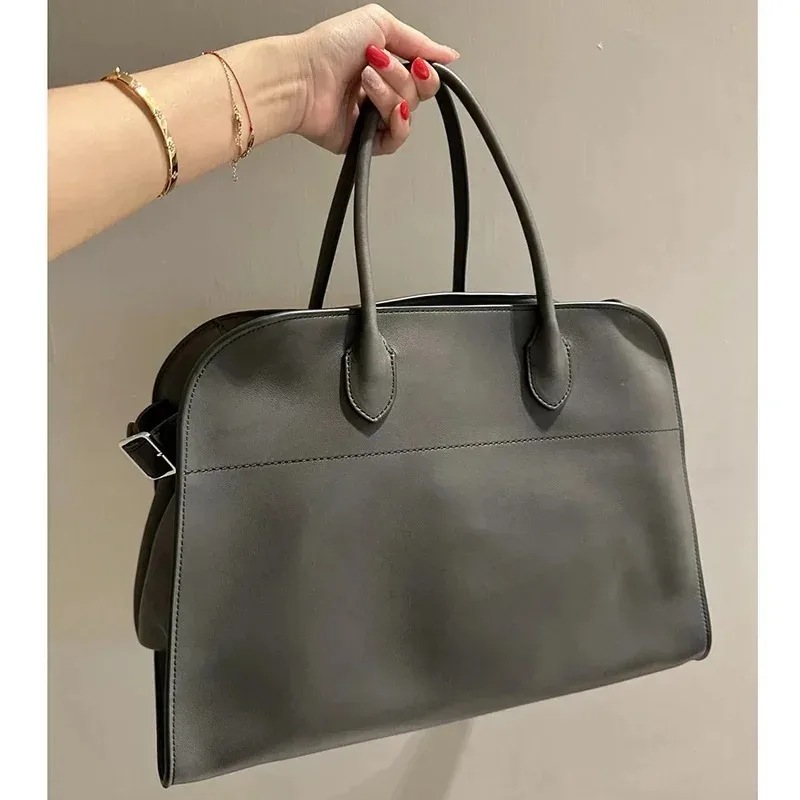
Creating an Effective Conditioning Schedule for Daily-Use Bags
Establishing a regular conditioning routine ensures your leather bag receives consistent care without over-treatment. While individual needs vary, this general schedule provides a solid starting point:
Daily Use Bag (Used 5+ days/week):
– Deep conditioning: Every 3-4 months
– Light conditioning of handles/stress points: Monthly
– Surface wipe-down with conditioning cloth: Weekly
Moderate Use Bag (Used 2-3 days/week):
– Deep conditioning: Every 6 months
– Light conditioning of handles/stress points: Every 2-3 months
– Surface wipe-down: Bi-weekly
Seasonal Use Bag:
– Deep conditioning: At beginning and end of usage season
– Storage conditioning: Before extended storage
Environmental factors significantly impact conditioning frequency. Consider these adjustments:
- Dry climate/Low humidity: Increase conditioning frequency by 25-50%
- Humid environment: May extend time between treatments
- Temperature extremes: Add protective conditioning before exposure
- Seasonal transitions: Apply conditioning when moving from heated to air-conditioned environments
Between scheduled sessions, remain vigilant for the early warning signs covered in section two. Early intervention with spot conditioning can prevent more significant issues from developing.
Our leather work totes collection includes pieces that benefit particularly from consistent conditioning schedules, helping them maintain their professional appearance despite daily workplace demands.
Avoiding Critical Conditioning Mistakes
Even with the best intentions, these common conditioning errors can damage your beloved leather bags:
Mistake #1: Over-conditioning
The Problem: Applying conditioner too frequently or heavily saturates leather, causing darkening, oil spots, or a sticky finish.
The Solution: Follow recommended schedules, use minimal product, and ensure complete absorption before reapplying.
Mistake #2: Using inappropriate conditioners
The Problem: Not all conditioners work for all leather types—using the wrong formula can damage finishes or alter appearance.
The Solution: Match conditioners specifically to your leather type and test on inconspicuous areas first.
Mistake #3: Rushing the process
The Problem: Not allowing proper absorption time between application steps leads to uneven results and surface residue.
The Solution: Be patient—allow 10-15 minutes of absorption time and full 24-hour curing before heavy use.
Mistake #4: Neglecting preparation
The Problem: Conditioning without proper cleaning traps dirt particles in leather, causing abrasive damage over time.
The Solution: Always clean thoroughly and allow complete drying before conditioning.
Mistake #5: Inconsistent application
The Problem: Applying conditioner unevenly creates patchy results with different levels of protection.
The Solution: Work methodically in small sections with consistent pressure and motions.
For specialty bags like those in our leather laptop work tote collection, proper conditioning technique is especially important to prevent damage around hardware and stress points that develop from carrying electronic devices.
Quick Daily Maintenance Tips Between Conditioning Sessions
Between deep conditioning treatments, these simple daily practices help maintain your bag’s appearance and extend the benefits of conditioning:
End-of-day wipe down: Spend 30 seconds with a clean, soft cloth to remove surface dust and oils from daily handling.
Handle attention: Apply a tiny amount of conditioner to a cloth and quickly wipe handles once weekly—they receive the most skin contact and wear.
Rotation system: If possible, rotate between two bags to allow leather to “rest” and natural oils to redistribute.
Strategic storage: When not in use, stuff your bag with acid-free tissue paper to maintain shape and store away from direct sunlight and heat sources.
Rain protection: After exposure to light rain, blot (don’t rub) with an absorbent cloth and allow natural air drying away from heat.
Quick-fix for small scratches: For minor scratches, use your fingertip to apply a tiny amount of conditioner, then buff gently—the natural oils often diminish small marks.
These micro-maintenance habits dramatically extend the time between deep conditioning sessions while keeping your bag looking its best every day. For comprehensive care information beyond conditioning, our definitive guide to ideal leather briefcases covers additional maintenance practices that preserve both appearance and functionality.
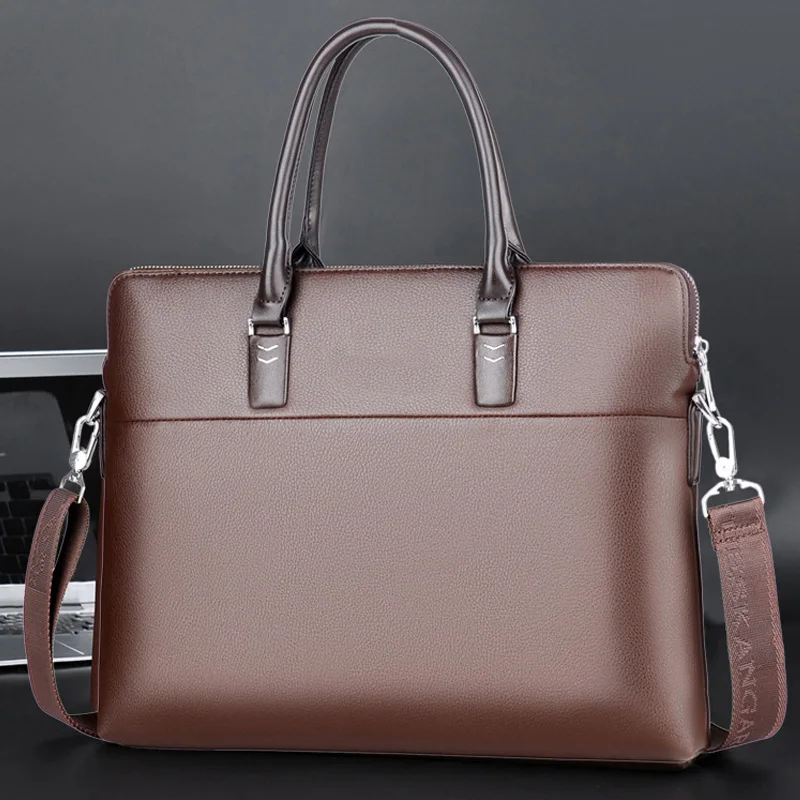
Handling Common Leather Bag Issues with Conditioning
Proper conditioning can address many common leather problems, though understanding its limitations is equally important:
Q: Can conditioning fix leather that’s already cracked?
A: Minor surface cracks may improve with conditioning, but deep structural cracks cannot be reversed—only prevented through regular maintenance. Apply conditioner gently around cracked areas to prevent further damage.
Q: How do I address water spots with conditioning?
A: For fresh water spots, allow complete drying, then apply conditioner evenly across the entire panel (not just the spot) to help blend the water mark into the surrounding leather.
Q: My bag’s color is fading. Will conditioning help?
A: Regular conditioning can slow color fading but cannot restore already-lost color. For significant fading, consider a color-matched leather cream after basic conditioning.
Q: The corners of my bag are wearing thin. Can conditioning help?
A: Conditioning softens and protects leather but cannot rebuild worn areas. Apply conditioner to corners regularly to prevent further wear, but significant corner wear may require professional repair.
Q: How do I address stiffening in rarely-used sections of my bag?
A: Stiff sections benefit from massage-like conditioning—apply product and gently manipulate the leather to increase flexibility as the conditioner absorbs.
For women’s specific bags like our women’s leather work totes, conditioning can help address unique wear patterns that develop from different carrying styles and contents.
What Does Your Leather Bag Need Beyond Conditioning?
While conditioning forms the cornerstone of leather care, a complete maintenance routine includes these complementary practices:
Protective treatment: After conditioning (and once fully absorbed), applying a leather protectant creates an invisible barrier against water, stains, and UV damage. Look for breathable formulas specifically designed for leather bags.
Hardware care: Metal clasps, zippers, and decorative elements benefit from occasional gentle polishing with a soft cloth. For stubborn tarnish, use specific metal polishes—carefully applied to avoid contact with adjacent leather.
Edge coating renewal: The painted edges of leather bags often wear before the leather itself. Special edge coating products can refresh these areas after conditioning the main surfaces.
Interior cleaning: Canvas or fabric linings accumulate debris and can transfer dirt to the leather. Regular vacuuming with a small attachment and spot cleaning with appropriate fabric cleaners maintains the interior.
Seasonal transition care: Before storing a bag for an extended period, condition thoroughly, stuff with acid-free paper to maintain shape, and store in a breathable dust bag (never plastic) in a climate-controlled environment.
These additional care practices work in harmony with your conditioning routine to provide comprehensive protection for your investment piece. For professional bags that require immaculate presentation, our guide to professional leather briefcases offers additional maintenance insights.
Brown Leather Work Tote, Large Leather Work Tote
$194.38 Select options This product has multiple variants. The options may be chosen on the product pageLeather Laptop Work Tote, Tan Leather Work Tote, Women's Leather Work Tote, Zippered Leather Work Tote
Price range: $223.62 through $237.97 Select options This product has multiple variants. The options may be chosen on the product pageBlack Leather Briefcase, Leather Document Bag, Men's Classic Leather Briefcase
Genuine Crocodile Leather Executive Briefcase with Password Lock – Premium Business Document Carrier$1,201.87 Select options This product has multiple variants. The options may be chosen on the product pageCanvas & Leather Messenger Bag, Leather Commuter Tote
$80.41 Select options This product has multiple variants. The options may be chosen on the product pageCrazy Horse Leather Satchel, Men's Leather Satchel, Men's Professional Leather Messenger, Vintage Style Messenger Bag
$132.70 Select options This product has multiple variants. The options may be chosen on the product pageBlack Leather Briefcase, Classic Laptop Briefcase, Men's Classic Leather Briefcase, Slim Leather Laptop Briefcase
$228.72 Select options This product has multiple variants. The options may be chosen on the product page
Is Professional Leather Care Ever Necessary?
While regular at-home conditioning maintains most leather bags beautifully, certain situations call for professional leather care services:
When to consider professional help:
- Deep, set-in stains that haven’t responded to gentle cleaning
- Significant color loss or uneven fading
- Structural damage to seams or attachment points
- Major water damage or mold/mildew development
- Torn or separated leather requiring reconstruction
- Valuable vintage or designer pieces requiring restoration
Professional leather specialists have access to commercial-grade cleaning systems, professional-strength conditioners, and specialized color-matching capabilities that go beyond DIY methods. They can also address structural issues like reinforcing weakened areas or restitching damaged seams.
When selecting a professional leather care service:
– Ask about their specific experience with your type of leather
– Request before/after examples of similar work
– Inquire about their process and products used
– Get a detailed estimate and timeline
For standard maintenance, most owners can achieve excellent results with proper at-home conditioning. However, recognizing when an issue exceeds your capabilities helps preserve valuable pieces like those in our black leather briefcase collection, where maintaining a professional appearance is paramount.
At Poise Porter, we believe that understanding proper leather care empowers you to enjoy your premium leather goods for years—even decades—to come. With regular conditioning and appropriate maintenance, your daily-use leather bag will not just survive but develop a rich, personal character that makes it uniquely yours.

